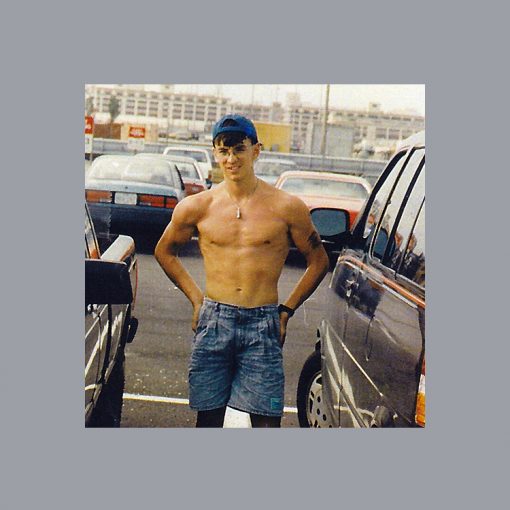Deep Submergence Unit (DSU) at Naval Air Station North Island was the public-facing operational arm of Submarine Development Group 1 where the Deep Submergence Rescue Vehicles, Deep Submergence Vehicles, Advanced Tethered Vehicle and other specialized gear was stored and maintained by a group of divers and submariners. One of the few guys who fit neither description was the staff photographer and documentarian, Photographer’s Mate Second Class Cesar Rush. He had been there for a couple years at that point, mostly responsible for taking snapshots at command functions and keeping the visitor folders stuffed with pretty images of DSU vehicles and people, in that order.
Cesar told me later that he resented the sight of my face the first day I came tearing into his shop all fired up to put our respective commands on the map. He had lost his own fire quite some time ago due to lack of support and my carte blanche to open the floodgates of publicity was all the more painful as a result. All the same, we became close friends as we joined forces to tell some great stories. My words painted pictures in the reader’s mind while Cesar’s pictures were each worth a thousand of the best words I could find. It was one of those friendships that feel lifelong right from the start, though it couldn’t survive the advent of Facebook, far right partisan politics and the election of Barack Obama.
As I neared the end of a second enlistment that started four years earlier aboard USS Hunley before I went to journalism school in Indianapolis, I made plans for my dad to read me the oath of enlistment in March for my next four years. The event would take place standing ankle deep in frigid water on a plain metal plate some 2,500 feet below the surface of the Pacific where the Mystic and the Avalon, the Navy’s two deep submergence rescue vehicles, practiced mating to the escape hatch of a submarine stuck on the ocean floor.
I picked the old man up at the airport and checked us into the Navy Lodge located near the main beach at Naval Air Station North Island on Coronado Island, just a stone’s throw from the piers where the DSRV support vessels were tied up and waiting for us to join them for the scheduled training run that made the special day possible in the first place. We had burgers and fries at the bowling alley after the old man schooled me hard in a couple of games. We snagged a six pack of beer on the way back to the hotel and spent the rest of the evening in companionable silence watching his favorite television shows until we fell asleep around eleven. The bedside alarm woke us up for our Father and Son Adventure Day at Oh-Dark-Thirty, always a couple hours before the sun came up.
The boat was pulling out at 0700, so we “Shit, Showered and Shaved” in Gordon’s parlance before hitting the McDonald’s on base for breakfast and coffee. The ship was a couple hundred feet long and maybe fifty wide with a flat bottom, a large forward wheelhouse and “cradle” at the stern to house the DSRV suspended over the water below. It was an pale orange-yellow over most of the square footage with dark-orange trim picking out details around windows and hatches and stacks. Cesar met us at the pier around 0630, greeted my dad warmly and led us to the stateroom we would be sharing even though we expected to return the same day. This ensured room on the life rafts should a normally straightforward trip come to dire straits. It was around noon when we anchored over the submarine rescue training platform two thousand feet below us of the coast of La Jolla Cove, and the crew started prepping the small green mini-submarine for launch.
My dad wore an ear-to-ear grin as we were led through safety drills and briefed on the mission parameters.
We climbed into the DSRV from underneath where the docking cradle would attach to a disabled submarine’s escape hatch in an emergency. The ladder disappeared into the center of three interconnected metal spheres, seven and a half feet in diameter, that made up the pressure-safe interior of the fifty-foot outer hull of green fiberglass that enclosed the vehicle’s ballast and sensitive electronics. Active sonar in the nose helped the pilots guide the mini-sub with uncanny accuracy to the site of a distressed nuclear submarine resting on the ocean floor while a fine-tuned propeller mechanism at the stern and shifting mercury ballast as needed allowed the vehicle to pitch and roll up to 45 degrees and still mate with the escape hatch of their target, an operation simulated today on a metal plate secured to the ocean floor more than two thousand feet below our feet.
Launching a DSRV from its surface support vessel is almost as exciting as watching cement dry without all the suspense of whether or not someone might carve their name in it. Doing it from the inside is marginally better with the electronic bells and whistles being managed by the submarine’s pilot and co-pilot in the forward sphere. The middle sphere was occupied by a lone sailor whose sole mission was the monitor the life-support systems that would keep us alive once we sunk under the gentle waves rocking us from side to side.
Dad was with me and Cesar in the aft sphere, not sure what to expect but avidly watching as the DSRV’s crew went through their paces with speed and accuracy. It was my first time on the DSRV, so I didn’t know what to expect when Cesar told us to hang on to the metal bar that went around the circumference of the curved bench seats we were sitting on and to brace his feet against the opposite side. He aimed his camera in our direction to snap off a series of pictures at odd angles when the pilot started to test the guidance and handling systems by taking the nimble submarine through its paces. At one point we were almost standing upright on the side of the seats across from us. The extreme angles had the added benefit of purging any excess air from the nooks and crannies of the dark green super-structure.
The vehicle leveled back out and the pilots told the surface support crew that we were descending to the test platform at a rate of one hundred feet per minute. Twenty-five minutes later, the sailor in the middle sphere announced we had a soft-seal and were draining the mating skirt. I’m not sure how long that took, but once a hard-seal was reached, we could open the hatch to let the passengers enter the middle sphere for a reenlistment ceremony that included me, my father, and DSU’s commanding officer. Cesar to capture the unique moment on film.
Climbing through the small opening between the aft sphere and the center sphere, we sat back on the bench around a hatch open to the cold steel of the test platform below us. A white circle was painted as a target and just barely off center of the mating skirt now dogged down securely by the sailor manning the life support. He climbed back out of the hole to make room for me and my father, now without shoes due to the 12 inches of water that remained after the pumping.
To say the water we stepped into was freezing would be a significant understatement. It was such a bone-chillingly intense shock that my legs went numb below the knee immediately and my previously frostbitten toes started a slow burn that would become a sharp pain in short order. I had never seen the old man so happy or proud in his official Deep Submergence Unit baseball cap and dark gray “US Navy Dad” sweatshirt, right hand raised and the left holding a cheat sheet for the thankfully brief oath of enlistment. The bright flashes of Cesar’s camera left spots in our eyes probably made the text harder to read, but we made it through without missing anything.
After dropping my hand and signing on the dotted line, I was officially locked into my last four years of military service.





